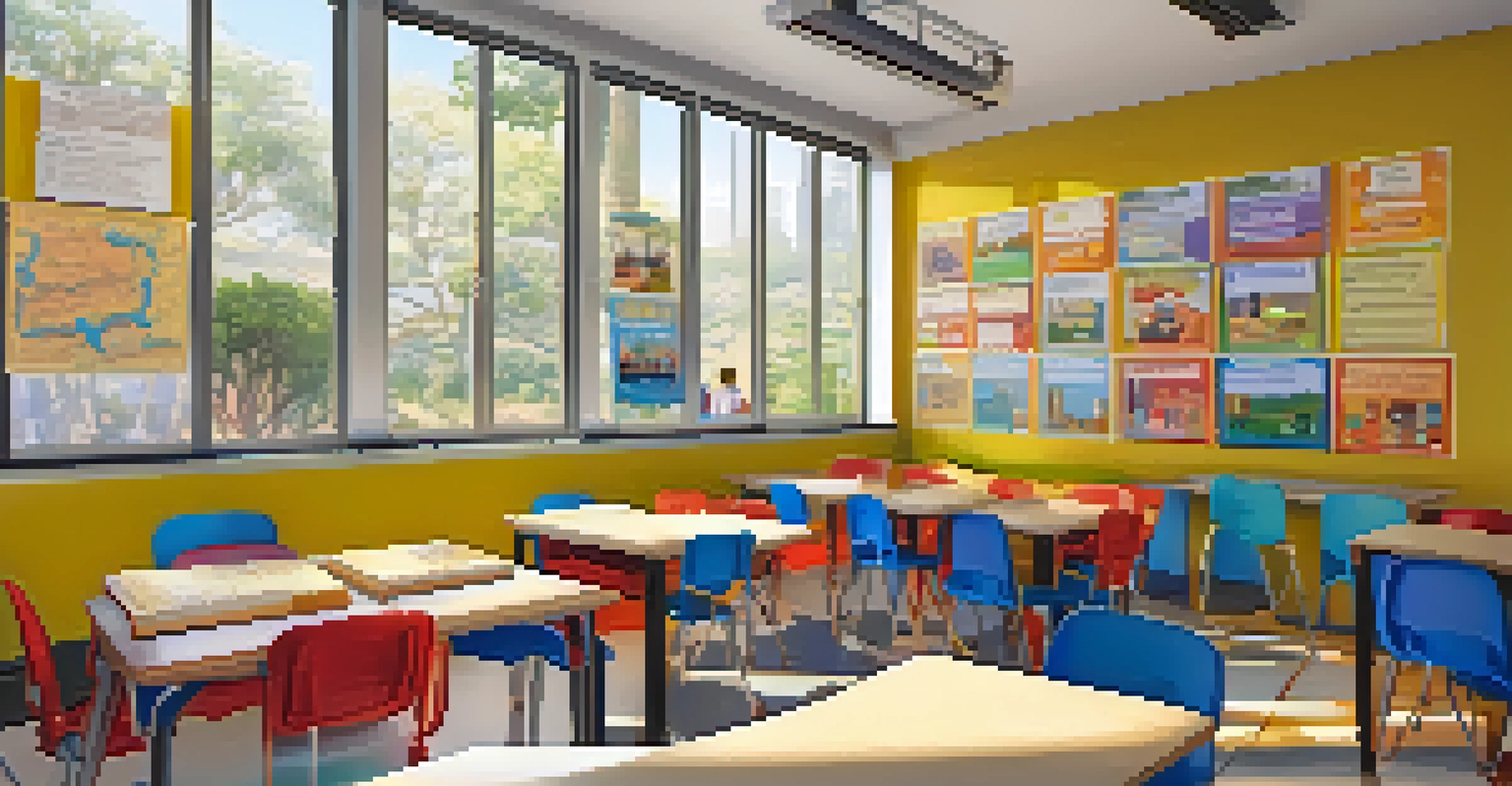Diversity in Education: Miami's Multicultural Institutions

The Rich Tapestry of Miami's Student Demographics
Miami is often described as a melting pot, where various cultures converge to create a vibrant community. The city's student demographics reflect this diversity, with a significant percentage of students identifying as Hispanic, Black, White, and Asian. This rich tapestry not only enhances the social fabric of schools but also prepares students for a globalized world.
Education is the most powerful weapon which you can use to change the world.
In classrooms filled with students from different backgrounds, the exchange of ideas leads to a more enriching educational experience. For instance, a discussion about cultural festivals can turn into a fascinating exploration of various traditions, helping students appreciate each other’s heritage. This collaborative learning environment fosters empathy, which is crucial for developing well-rounded individuals.
Moreover, the presence of diverse cultures in schools encourages the inclusion of varied perspectives in the curriculum. When students learn about history, literature, and science through the lens of multiple cultures, they gain a more comprehensive understanding of the world. Ultimately, this approach helps to cultivate critical thinking and creativity among students.
Culturally Inclusive Curriculum
A culturally inclusive curriculum is essential for reflecting the diversity in Miami's classrooms. Schools in the area are increasingly integrating multicultural education into their curricula, ensuring that all students see themselves represented in the materials they study. This not only boosts engagement but also validates students' identities and experiences.

For example, literature classes may include works by authors from various backgrounds, allowing students to connect with stories that resonate with their own lives. History lessons might explore events from multiple cultural perspectives, enabling a richer understanding of the past. This approach fosters a sense of belonging and encourages students to share their own stories.
Diversity Enriches Education
Miami's diverse student demographics enhance educational experiences by fostering empathy and cultural appreciation.
Furthermore, by embracing a culturally inclusive curriculum, educators can challenge stereotypes and combat bias. When students learn about different cultures in an authentic and respectful way, they become more open-minded and appreciative of diversity. This, in turn, helps to build a more harmonious school environment.
Extracurricular Programs Supporting Diversity
Extracurricular programs play a vital role in promoting diversity within Miami's educational institutions. Schools often offer clubs and activities that celebrate different cultures, such as multicultural fairs, dance classes, and language clubs. These programs provide students with opportunities to connect beyond the classroom and learn from one another.
Diversity is not a reason for fear, it is a reason for celebration.
For instance, a multicultural fair not only showcases various cuisines and traditions but also encourages students to share their own cultural heritage. Such events foster a sense of pride among students while also educating their peers about the richness of different backgrounds. This interaction nurtures friendships and breaks down barriers.
Additionally, participating in diverse extracurricular activities can enhance students' social skills and confidence. By engaging with peers from various cultures, they learn to navigate different social settings and appreciate diversity in all its forms. This experiential learning is invaluable, as it prepares students for an increasingly diverse workforce.
The Role of Language in Multicultural Education
Language is a crucial aspect of Miami's multicultural education landscape. With a significant number of students speaking Spanish, Haitian Creole, and other languages, schools are adapting to meet the needs of their diverse student body. Bilingual education programs are becoming more common, allowing students to maintain their native language while learning English.
For instance, students who participate in dual-language programs benefit from enhanced cognitive skills, improved academic performance, and increased cultural awareness. These programs not only support language acquisition but also promote a positive view of bilingualism, encouraging students to embrace their linguistic heritage.
Inclusive Curriculum Matters
A culturally inclusive curriculum reflects the diversity of students, validating their identities and promoting engagement.
Moreover, schools are increasingly recognizing the importance of offering language support services. By providing resources like ESL (English as a Second Language) classes, educators can help non-native speakers bridge language gaps. This support is vital for ensuring that all students have equal access to educational opportunities.
Community Engagement in Multicultural Education
Community engagement is fundamental to the success of multicultural education in Miami. Schools are actively involving parents and local organizations to create a supportive network for students. When families are engaged in their children's education, it fosters a sense of belonging and commitment to the school community.
For example, many schools host workshops and events that invite parents to share their cultural traditions and experiences. This not only enriches the learning environment but also strengthens the bond between the school and the community. When students see their families actively participating, they are more likely to take pride in their educational journey.
Additionally, partnerships with local organizations can provide valuable resources and opportunities for students. From mentorship programs to cultural exchange initiatives, these collaborations enhance the educational experience and prepare students for future success. Ultimately, community engagement plays a crucial role in creating a vibrant, inclusive educational atmosphere.
Challenges and Opportunities in Multicultural Education
While Miami's educational institutions are making strides towards embracing diversity, challenges still exist. Issues such as resource disparities, language barriers, and cultural misunderstandings can hinder effective multicultural education. Addressing these challenges requires a concerted effort from educators, policymakers, and the community.
For example, some schools may lack the funding necessary for comprehensive programs that support diverse learners. Advocating for equitable resource allocation is essential for ensuring that all students receive the support they need. Additionally, providing professional development for educators can help them better understand and address the unique needs of their students.
Community Engagement is Key
Active involvement of families and local organizations strengthens multicultural education and fosters a sense of belonging.
However, these challenges also present opportunities for growth and improvement. By focusing on innovative solutions, such as community partnerships and tailored support services, schools can enhance their multicultural education efforts. This proactive approach not only benefits students but also strengthens the entire educational system.
The Future of Diversity in Miami's Education System
Looking ahead, the future of diversity in Miami's education system appears promising. With a continued commitment to inclusivity and cultural representation, schools are poised to lead the way in multicultural education. This evolving landscape opens up new avenues for collaboration and innovation.
As educational institutions embrace diversity, they will likely implement more programs designed to address the specific needs of their students. By fostering an environment where every voice is valued, schools can cultivate an atmosphere of respect and understanding. This, in turn, prepares students to thrive in a global society.

Moreover, the ongoing dialogue about diversity and inclusion in education will encourage continuous reflection and adaptation. By actively seeking feedback from students, families, and communities, schools can ensure their approaches remain relevant and effective. The journey towards a truly inclusive education system is ongoing, but Miami is well on its way.